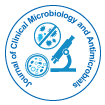

Commentary - (2025)Volume 9, Issue 2
The phylum Neocallimastigomycota, a relatively lesser-known group of fungi, is carving its own fungal frontiers in the vast and intricate tapestry of ecological diversity. In this opinion piece, we explore the unique characteristics and ecological significance of Neocallimastigomycota, shedding light on their role in various ecosystems and their potential applications. From symbiotic relationships to untapped biotechnological potential, the fungal frontiers of Neocallimastigomycota are poised to rewrite our understanding of fungal ecology.
Hidden symbioses: Neocallimastigomycota in herbivore digestive systems
One of the remarkable fungal frontiers of Neocallimastigomycota is its prevalence in the digestive systems of herbivores. This section delves into the symbiotic relationships between these fungi and their hosts, highlighting how Neocallimastigomycota contribute to the breakdown of complex plant materials in the digestive tracts of animals like ruminants. The intricate dance between fungi and herbivores showcases the hidden symbioses that underpin the ecological functioning of these ecosystems.
Microbial engineers: Neocallimastigomycota in nutrient cycling
Beyond their role in herbivore digestion, Neocallimastigomycota act as microbial engineers in nutrient cycling within ecosystems. This part of the opinion piece explores how these fungi contribute to the decomposition of plant materials, releasing essential nutrients back into the environment. The fungal frontiers of Neocallimastigomycota extend beyond their direct interactions with herbivores, playing a vital role in the larger nutrient cycling processes that sustain ecosystems.
Environmental adaptability: Neocallimastigomycota in extreme habitats
Neocallimastigomycota's fungal frontiers extend to extreme habitats, showcasing their environmental adaptability. This section examines their presence in environments like the digestive tracts of large herbivores to harsh conditions in the digestive systems of smaller animals. The ability of Neocallimastigomycota to thrive in such diverse and extreme habitats speaks to their resilience and underscores their importance in ecological processes.
Biotechnological treasure troves: Unlocking Neocallimastigomycota's potential
The fungal frontiers of Neocallimastigomycota hold untapped potential for various biotechnological applications. This part of the opinion piece explores how these fungi, with their unique enzymatic capabilities, could be harnessed for biofuel production, waste degradation and other industrial processes. Neocallimastigomycota's diverse enzymatic toolkit presents a treasure trove for researchers seeking sustainable and efficient solutions in the realms of biotechnology and waste management.
Conservation challenges: Navigating threats to Neocallimastigomycota
Despite their ecological importance and biotechnological potential, Neocallimastigomycota face conservation challenges. This section discusses the threats posed by habitat loss, climate change and the overuse of antibiotics in livestock farming, which can disrupt the delicate balance of these fungi in their respective ecosystems. Navigating these conservation challenges is essential to ensuring the persistence of Neocallimastigomycota and the services they provide to the environment.
Unveiling genomic mysteries: Neocallimastigomycota's genomic landscape
The fungal frontiers of Neocallimastigomycota extend into the realm of genomics, where researchers are unraveling the mysteries of their genetic makeup. This part of the opinion piece explores how genomic studies are shedding light on the evolutionary relationships, adaptations and functional genomics of Neocallimastigomycota. The genomic landscape of these fungi provides insights into their unique ecological roles and potential applications.
Future prospects: Collaborative research and conservation efforts
In looking ahead, collaborative research efforts and conservation initiatives are crucial for exploring and preserving the fungal frontiers of Neocallimastigomycota. This section emphasizes the need for interdisciplinary approaches that bring together ecologists, microbiologists and biotechnologists to fully understand and harness the potential of these fungi. Conservation efforts must also address the environmental challenges that threaten the habitats of Neocallimastigomycota.
The fungal frontiers of phylum Neocallimastigomycota paint a vivid picture of ecological intricacies, symbiotic relationships and biotechnological potential. From their hidden symbioses in herbivore digestive systems to their adaptability in extreme habitats, these fungi offer a wealth of insights and opportunities. However, as we navigate the fungal frontiers, it is imperative to recognize and address the conservation challenges to ensure the continued ecological contributions of Neocallimastigomycota. Through collaborative research and conservation efforts, we can unlock the full potential of these fungi and rewrite the narrative of fungal ecology.
Citation: Vuong J (2025) Fungal Frontiers in the Diverse Ecology of Phylum Neocallimastigomycota. J Clin Microbiol Antimicrob. 09:215.
Received: 14-Mar-2024, Manuscript No. JCMA-24-30136; Editor assigned: 18-Mar-2024, Pre QC No. JCMA-24-30136 (PQ); Reviewed: 02-Apr-2024, QC No. JCMA-24-30136; Revised: 05-Feb-2025, Manuscript No. JCMA-24-30136 (R); Published: 12-Feb-2025 , DOI: 10.35248/jcma.25.9.215
Copyright: © 2025 Vuong J. This is an open-access article distributed under the terms of the Creative Commons Attribution License, which permits unrestricted use, distribution, and reproduction in any medium, provided the original author and source are credited.